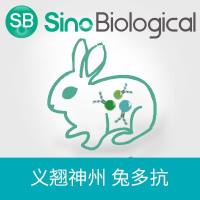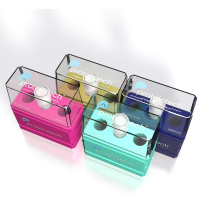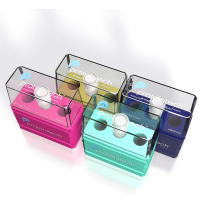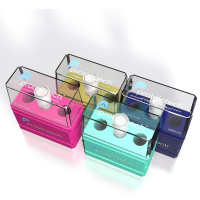Measurement of NO and NO Synthase
互联网
- Abstract
- Table of Contents
- Materials
- Figures
- Literature Cited
Abstract
Nitric oxide (NO) is a key biosignaling molecule produced in both peripheral tissues and the central nervous system by a family of enzymes known as nitric oxide synthases (NOSs). NOSs convert L?arginine to stoichiometric quantities of NO and L?citrulline using molecular oxygen and NADPH as cofactors. Techniques for measurement of NO and NOS activity are essential to demonstrate the role of NO and NO?derived species in biological systems. This unit describes two methods for detection of NO: a direct method employing chemiluminescent detection and one based on quantification of the stable oxidation products with detection using the Greiss reagent. Additionally, NOS activity can be quantified by measuring the conversion of radiolabeled L?arginine to radiolabeled L?citrulline.
Table of Contents
- Basic Protocol 1: Chemiluminescent Detection of NO
- Support Protocol 1: Preparation of a Reducing Agent for Conversion of Nitrite to NO
- Support Protocol 2: Preparation of Nitrate Reducing Agent
- Support Protocol 3: Deproteination of Samples for Nitrate/Nitrite Assay
- Basic Protocol 2: Nitrite and Nitrite/Nitrate Assay by the Griess Method
- Basic Protocol 3: L‐Citrulline Assay for Nitric Oxide Synthase (NOS) Activity
- Support Protocol 4: Preparation and Regeneration of Cation‐Exchange Columns
- Support Protocol 5: Purification of Radiolabeled L‐Arginine
- Support Protocol 6: Nitric Oxide Synthase (NOS) Preparation
- Reagents and Solutions
- Commentary
- Literature Cited
- Figures
Materials
Basic Protocol 1: Chemiluminescent Detection of NO
Materials
Support Protocol 1: Preparation of a Reducing Agent for Conversion of Nitrite to NO
Support Protocol 2: Preparation of Nitrate Reducing Agent
Materials
Support Protocol 3: Deproteination of Samples for Nitrate/Nitrite Assay
Materials
Basic Protocol 2: Nitrite and Nitrite/Nitrate Assay by the Griess Method
Materials
Basic Protocol 3: L‐Citrulline Assay for Nitric Oxide Synthase (NOS) Activity
Materials
Support Protocol 4: Preparation and Regeneration of Cation‐Exchange Columns
Materials
Support Protocol 5: Purification of Radiolabeled L‐Arginine
Materials
Support Protocol 6: Nitric Oxide Synthase (NOS) Preparation
Materials
|
Figures
-

Figure 7.13.1 The reaction catalyzed by NOS. View Image -

Figure 7.13.2 The chemiluminescence detector for measurement of gas‐phase NO. Inflow of gas from the purge vessel to the chemiluminescence detector is regulated with a needle valve. NO in the inflow gas mixes with ozone in a reaction chamber, producing excited state NO2 *. The decay of NO2 * results in a photon emission that is converted to an electric current by a photomultiplier tube (PMT). The amplified signal is sent to a chart recorder, integrator, or computerized data analysis system for processing. View Image -

Figure 7.13.3 A gas sparging vessel that can be utilized for analysis of NO, NO/nitrite, and NO/nitrite/nitrate by chemiluminescence detection. View Image -

Figure 7.13.4 Griess reaction for detection of nitrite, and the sum of nitrite and nitrate, in biological samples. View Image
Videos
Literature Cited
| Literature Cited | |
| Bredt, D.S. and Snyder, S.H. 1990. Isolation of nitric oxide synthetase, a calmodulin‐requiring enzyme. Proc. Natl. Acad. Sci. U.S.A. 87:682‐685. | |
| Fontijn, A., Sabadell, A.J., and Ronco, R.J. 1970. Homogenous chemiluminescent measurement of nitric oxide: Implications for continuous selective monitoring of gaseous air pollutants. Anal. Chem. 42:575‐579. | |
| Furchgott, R.F. and Zawadzki, J.V. 1980. The obligatory role of endothelial cells in the relaxation of arterial smooth muscle by acetylcholine. Nature 288:373‐376. | |
| Griess, J.P. 1864. On a new series of bodies in which nitrogen is substituted for hydrogen. Philos. Trans. R. Soc. Lond. B. Biol. Sci. 154:667‐731. | |
| Gross, S.S. 1996. Microtiter plate assay for determining the kinetics of nitric oxide synthesis. Methods Enzymol. 286:159‐168. | |
| Hattori, Y., Campbell, E.B., and Gross, S.S. 1994. Argininosuccinate synthetase mRNA and activity are induced by immunostimulants in vascular smooth muscle: Role in the regeneration of arginine for nitric oxide synthesis. J. Biol. Chem. 269:9405‐9408. | |
| Ignarro, L.J., Buga, B.M., Wood, K.S., Byrns, R.E., and Chaudhuri, G. 1987. Endothelium‐derived relaxing factor produced and released by artery and vein is nitric oxide. Proc. Natl. Acad. Sci. U.S.A. 84:9265‐9269. | |
| Ishii, K., Sheng, H., Warner, T.D., Forstermann, U., and Murad, F. 1991. A simple and sensitive bioassay method for detection of EDRF with RFL‐6 rat lung fibroblasts. Am. J. Physiol. 261:H598‐603. | |
| Kikuchi, K., Nagano, T., Hayakawa, H., Hirata, Y., and Hirobe, M. 1993. Detection of nitric oxide production from a perfused organ by a luminol‐H2O2 system. Anal. Chem. 65:1794‐1799. | |
| Malinski, T., Bailey, F., Zhang, Z.G., and Chopp, M. 1993. Nitric oxide measured by a porphyrinic microsensor in rat brain after transient cerebral artery occlusion. J. Cereb. Blood Flow Metab. 13:355‐358. | |
| Nathan, C. and Xie, Q.W. 1994. Regulation of biosynthesis of nitric oxide. J. Biol. Chem. 269:13725‐13728. | |
| Palmer, R.M.J., Ferrige, A.G., and Moncada, S. 1987. Nitric oxide release accounts for the biological activity of endothelium‐derived relaxing factor. Nature 327:524‐526. | |
| Salter, M., Knowles, R.G., Moncada, S. 1991. Widespread tissue distribution, species distribution and changes in activity of Ca2+‐dependent and Ca2+‐independent nitric oxide synthases. FEBS Lett. 291:145‐149. | |
| Schmidt, H.H., Hofmann, H., Schindler, U., Shutenko, Z.S., Cunningham, D.D., and Feelisch, M. 1997. No NO from NO synthase. Proc. Natl. Acad. Sci. U.S.A. 93:14492‐14497. | |
| Stuehr, D.J., Gross, S.S., Sakuma, I., Levi, R., and Nathan, C. 1989. Activated macrophages secrete a metabolite of arginine with the bioactivity of endothelium‐derived relaxing factor and the chemical reactivity of nitric oxide. J. Exp. Med. 169:1011‐1020. |









